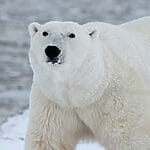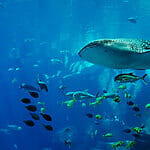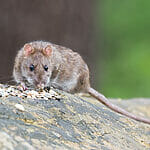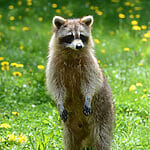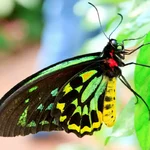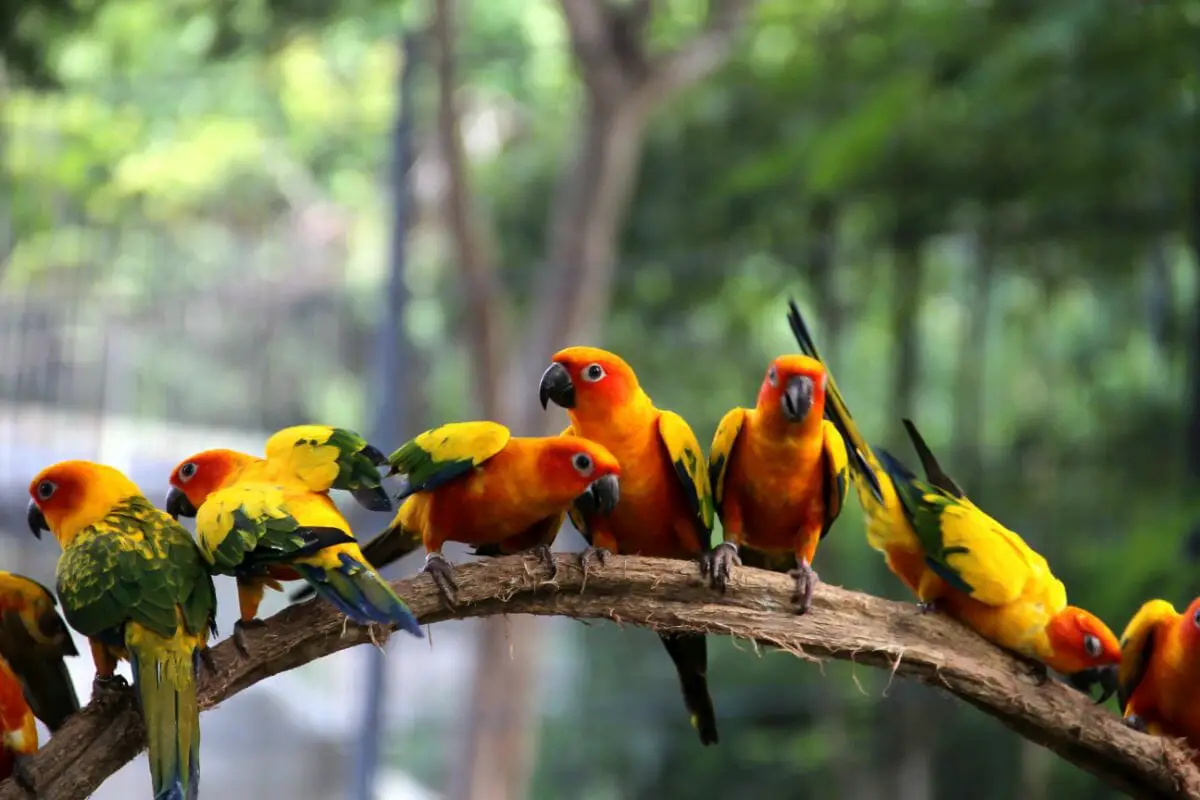One of the most interesting things about the animal kingdom is the varied diets of all of the various animals that make it up.
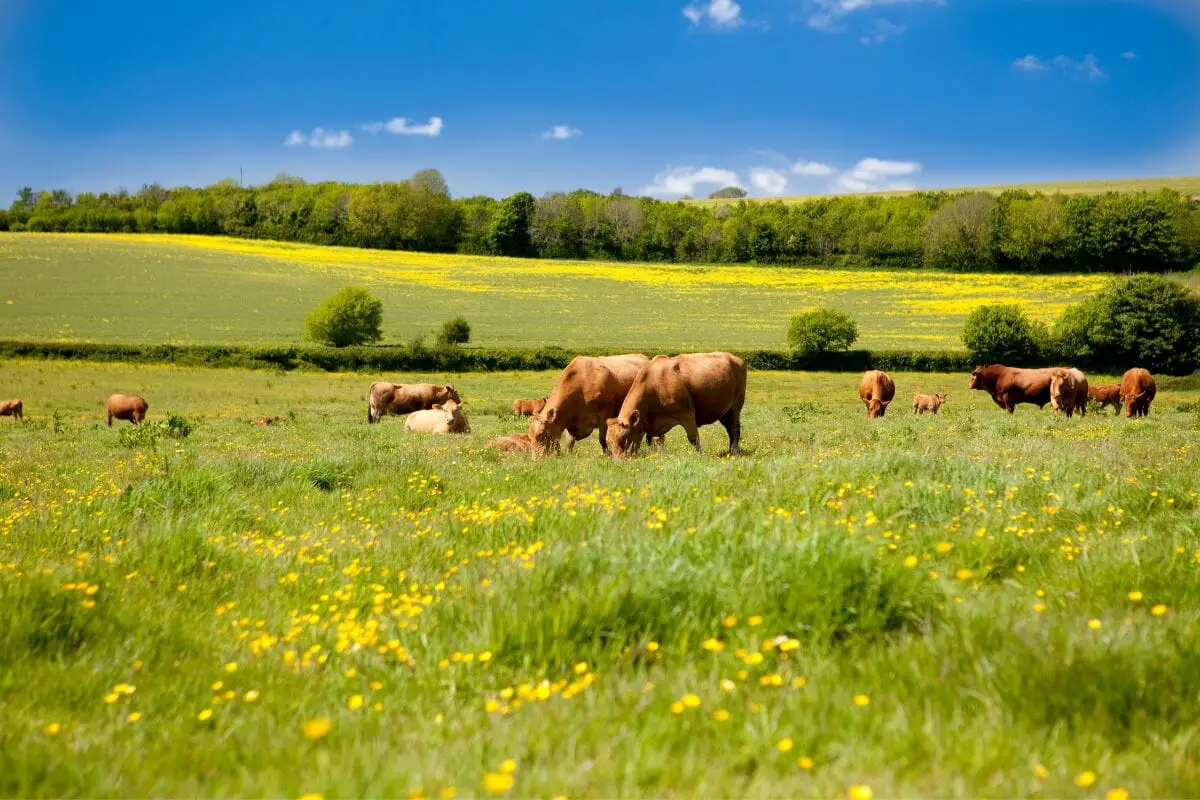
We all know that some animals are carnivores, while others are herbivores, but yet we still often find ourselves surprised to hear that certain animals can eat certain foods.
One source of food that is often popular amongst many types of animals is grass. While, for us, the grass is simply a solution to help make a garden look nice or a soft place to sit and rest, for many animals, it is a vital part of their diet.
What makes a diet of grass so inherently interesting is the fact that, unlike most animals, humans do not have a digestive system that can handle grass.
So what are some of the most common consumers of grass in the world? Which animals enjoy feeding on it, and why?
If these questions quite often pop up into your mind, then you will want to keep reading, because today we are going to look at animals that eat grass! So read on below to get started!
Pandas

Pandas are famous all across the world thanks to their totally adorable shape and size, as well as their iconic black-and-white fur. Of course, these Chinese-native creatures aren’t just iconic for their appearance, as they are also very iconic thanks to their diet.
When you think of a panda, you most likely imagine it chewing on some delicious and fresh bamboo from the landscape around it. Well, bamboo is actually a form of grass that is just a lot larger than the grass we usually think of.
Bamboo is heavily abundant in a panda’s natural habitat, so the animal has evolved to get much of its nutrients and dietary needs from chewing on bamboo.
This is doubly interesting when we consider the fact that, despite subsisting almost entirely on bamboo, the panda actually has a stomach designed to accommodate a carnivorous diet. That’s right! Pandas are carnivores, yet they mostly subsist on bamboo.
Pandas are also insatiable lovers of bamboo, as it is common to see an average panda chewing on bamboo for up to 10 hours at a time on any given day.
They truly cannot get enough of the stuff, and this is benefitted by the fact that pandas live in areas of China known for having an abundance of bamboo.
Rhinoceros
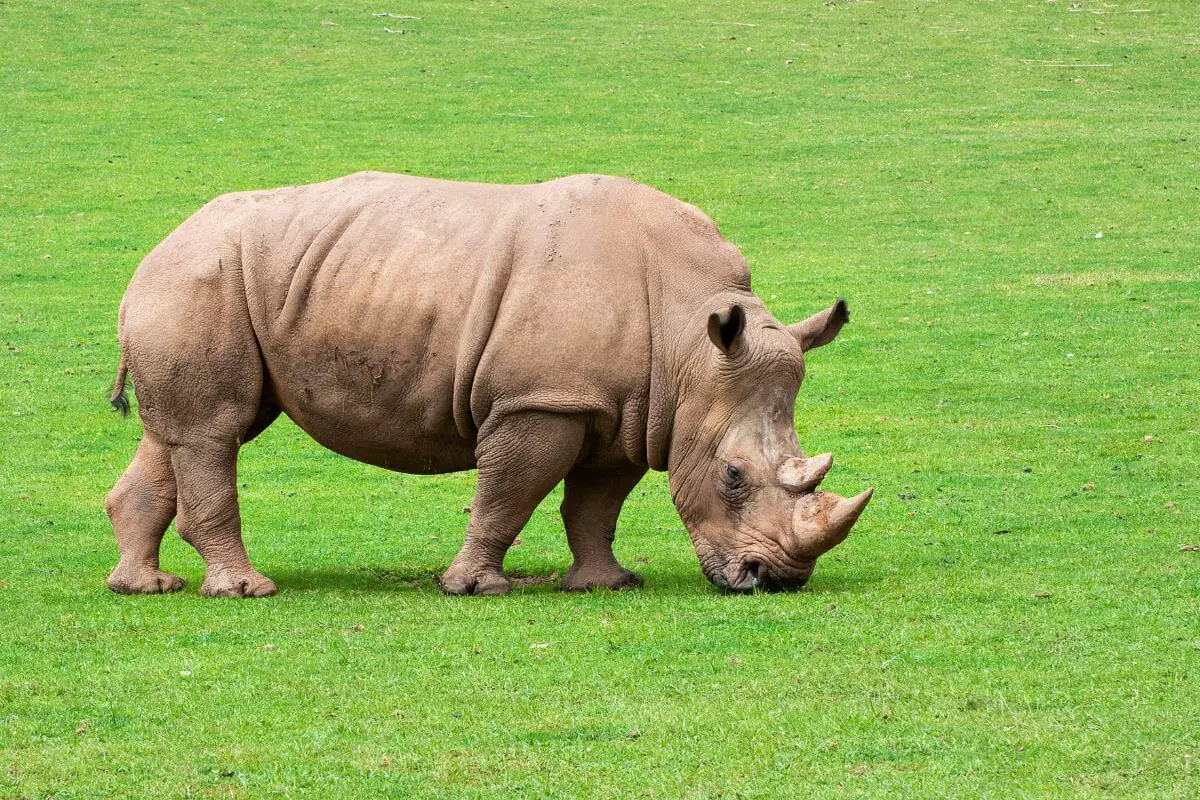
Though the white rhino species may look on the surface like it subsists on a diet of meat, thanks to its large horn that looks primed to take down prey, the rhinoceros is actually a herbivore, able to enjoy the taste of grass in its environment.
The lips of the rhinoceros are incredibly wide, which allows them to easily graze high yields of grass very quickly, allowing them to get all of the nutrients that they need in close to no time at all.
Unfortunately, both species of white rhino are considered to be critically endangered, thus you are more likely to spot them in wildlife reserves or zoos, chewing on the grass that is specially cultivated and grown just for them.
Once the grass has been consumed by the rhino, it then passes through the rhino’s digestive system.
The cellulose that is naturally released by grass as it is chewed is then digested in the stomach, providing the nutrients directly to the rhino.
Much like the kangaroo, the stomach activity of the rhino can often be very slow, as the body needs to carefully digest the grass in order to draw all of the useful nutrients from within and pass them through the system.
Cattle
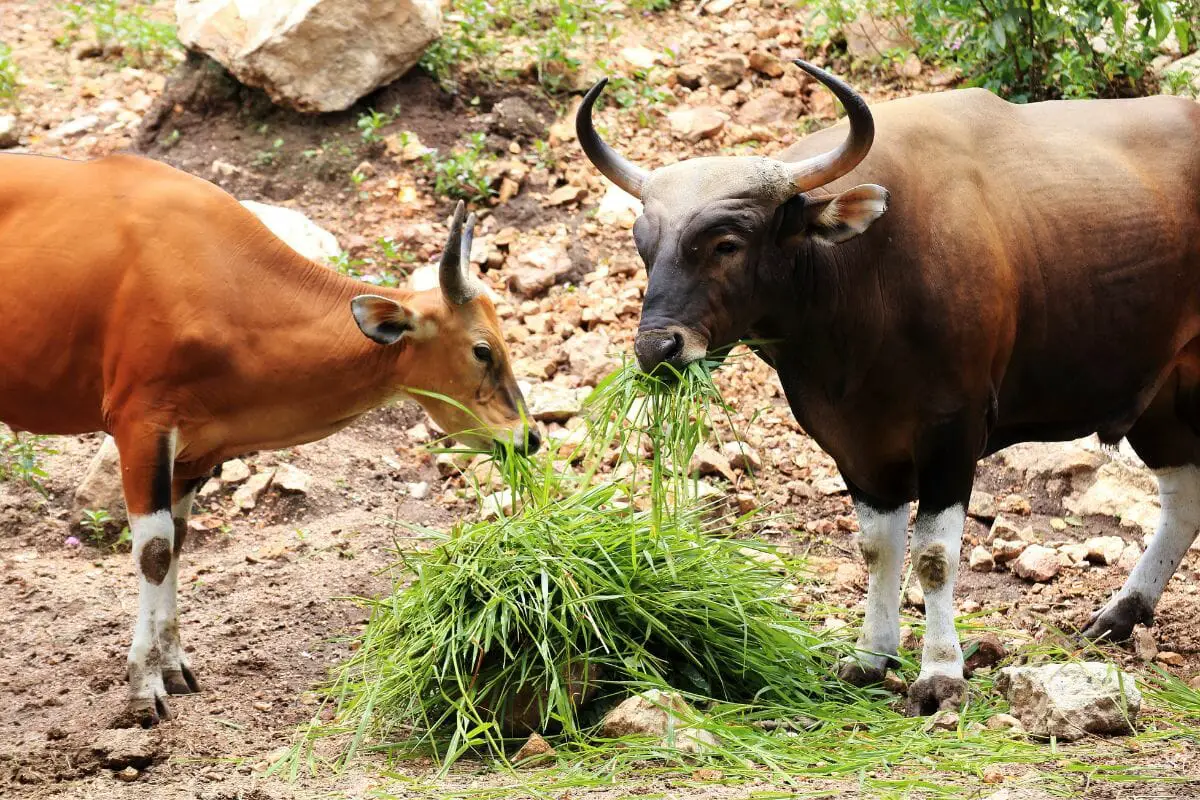
It should probably come as no surprise that cattle are grass eaters, as you’ve likely observed them eating grass out in the fields, even near your local area.
The digestive system of an average cow is incredibly complex, and this allows the animal to easily draw all of the vital nutrients from every blade of grass by carefully digesting the grass over time in the multiple chambers of the stomach.
When grass is consumed by a cow, it first passes into the rumen, from which it then reaches the chamber of the stomach known as the reticulum. It is in the reticulum that the grass is fermented, which causes the cellulose to be broken down.
But that isn’t it! Once the cellulose has been broken down, the solid part of the grass left behind is then moved back up into the mouth, so that the cow can chew on it.
Once the cow has chewed on what is known as the ‘Cud’, the chewed cud (see also: Animals That Chew Cud)then passes into the omasum, which then sends the cud through to the abomasum, the final chamber of the stomach.
In the abomasum, the cud is then sent through a final digestion process in which the remaining cud is subjected to various acids and enzymes that help to break it all down, ready for the intestines.
Grasshoppers

In retrospect, it should come as no real surprise that grasshoppers enjoy chewing on grass, as their name suggests.
Grasshoppers are often seen as pests by many people that cultivate grass because they can often be found swarming particular types of grass together, such as quackgrass, junegrass, and even Johnson grass, all of which are common favorites of the grasshopper.
Grasshoppers have also been known to enjoy eating corn and various oats, which can make them particularly troublesome for farmers that specialize in cultivating these specific plants.
When eating grass, most species of grasshoppers will eat the grass all the way down to the central crown of each tuft of grass.
Because of their size, this can take a grasshopper quite a long amount of time to do, and thus it is unlikely that a single grasshopper alone will be able to do much damage.
However, a swarm of grasshoppers could very quickly prove to be troublesome to farmers of other grass-eating animals.
Grasshoppers tend to prefer to flock to areas that have high concentrations of grass so that they can more easily enjoy it without competing with other creatures.
Thus, it is important to till your field regularly if you maintain grass, as it will help to keep grasshoppers from migrating to specific patches.
Kangaroo

Many people are often surprised to learn that the kangaroo actually feeds on a diet of grass. Kangaroos will often graze together in large groups and can be found at night amongst the shrubs of Australia, searching for yields of fresh grass to chew on .
Grass is very important for the diet of a kangaroo thanks to the fact that it has loads of fiber in it, as well as plenty of natural water content, which means that kangaroos often don’t have to drink much water at all to stay healthy.
This is important considering just how blazing hot the Savannahs of Australia can become.
As well as this, the digestive system of the kangaroo is very unique. A small pouch is located within the large intestine. This small pouch is full of microbes that are important for breaking down cellulose, which is one of the key nutrients that can be found in grass.
Kangaroos need grass to survive, alongside other foods such as leaves and tree bark, as they are full of vital nutrients that keep them energized.
Llamas
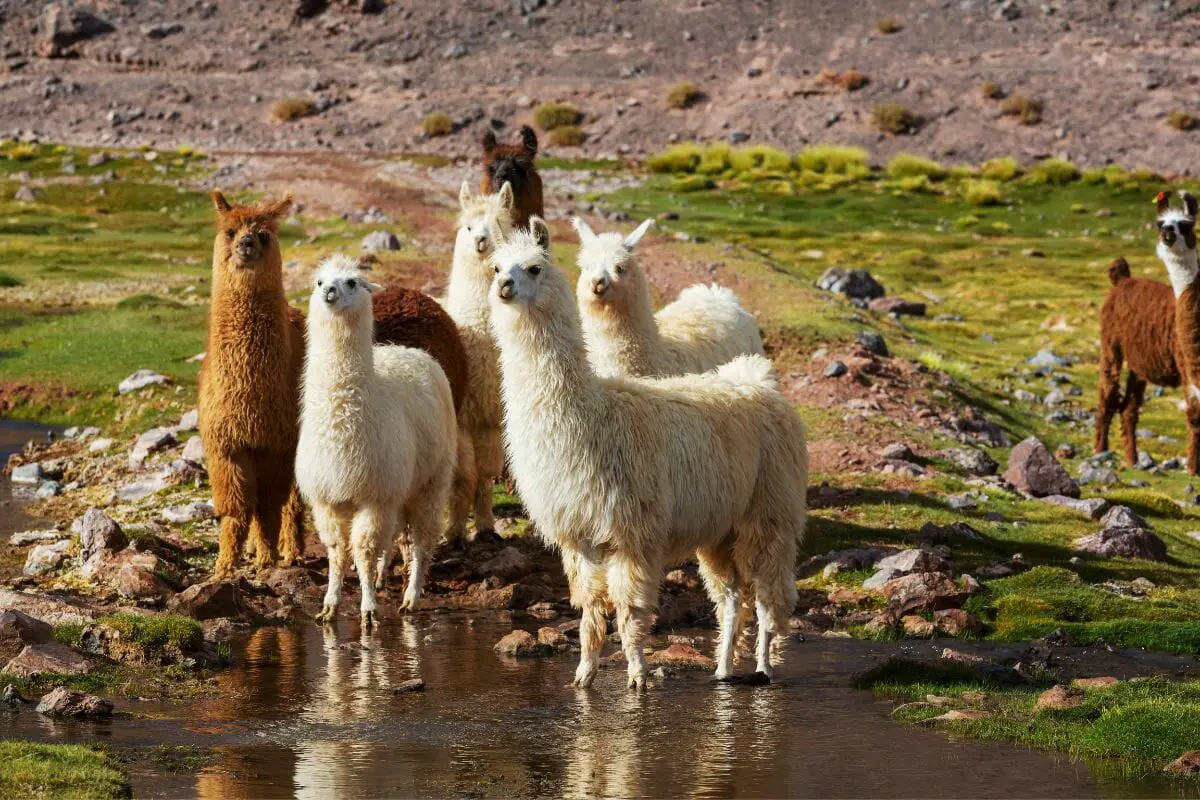
Llamas are perhaps some of the world’s most famous grass eaters, thanks to the fact that they are often found slowly chewing on grass in their iconic way, with a slight slack-jawed look on their faces!
Llamas are perhaps best known for popping up in the Andes mountains, which are known for being bountiful reserves of fresh grass, plant life, and alfalfa, perfect for llamas to get all of the nutrients that they need to keep themselves field throughout the day.
Llamas are incredibly laidback and relaxed animals that feed on a diet that consists almost entirely of grass and other plant life, which makes them very popular companions not only in their native Andes but also amongst people in the West, who have discovered the sheer joy that llamas can offer.
To Wrap Up
As you can now see, there are plenty of animals that eat grass as a major part of their central diet, and some of the animals on this list may well have surprised you quite a bit.
While grass cannot comfortably be consumed by humans, it is an important staple in the diet of many animals across the world.
Grass contains many awesome nutrients that help to keep the bodies of many animals functioning as they should.
As well as this, grass can also be a great source of water in the diet of many animals, which is very important for creatures such as the kangaroo, which commonly live in dry lands such as the savannahs of Australia.

